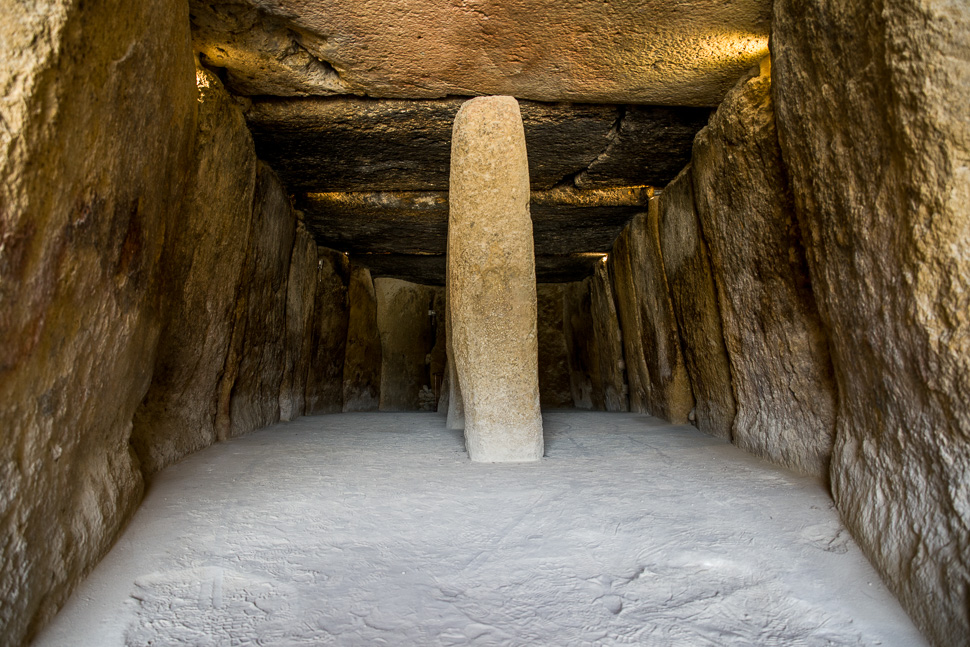Just outside of Antequera are 2 places we went to visit: the Dolmens from 3800 BC, which impressed us with their size and the Lagunas de Fuente de Piedra, a salt water lake which is inhabited by many birds, especially one of the largest Flamingo colonies in Europe.

We spent the night at a parking near the lagune, before we circled the lake, stopping at each lookout point.

Humans are kept at a good distance to the lake as to not disturb the birds, but it made it hard to take pictures, even with the 500mm lens. To our excuse, the sky was overcast which didn’t provide the best light either.
 |
| Lagunas de Fuente de Piedra |


 |
|
| Black-winged stilt |
At the visitor centre, we watched a video where also the marking of the young birds with a ring was shown. Seems to be quite the event for the whole town. Some years they had more than 15.000 young birds.
Back at Antequera we visited the Dolmens. Each of them is different in construction and orientation.

The first one we visited, was the Dolmen of Menga – a gallery dolmen in which an open Atrium gives way to a corridor leading to an oval shaped chamber. It is 27.5 m in length and 3.5 m in height inside. A very impressive dimension! It was build around 3800 BC and was used as a holy space or funeral place until Medieval times. Its orientation is not the typical one, instead it is oriented in direction of La Peña, the mountain in form of a lying head.


 |
| Opening in the direction of La Peña |
Just next to Menga the Dolmen of Viera is a corridor tomb with a cubic chamber at the end and a length of 22 metres. It was built later than Menga and is orientated to the equinox sunrise.


A little further away from Antequera lies the Dolmen of El Romeral,
which is a tholos-type tomb with two circular chambers. The main
chamber is made with stonework that ends in a large horizontal slab. The
chamber has a diameter of 5.20m and a hight of 3.75m. It was very
impressive to stand under this dome which was built in the Copper Age.
The orientation of El Romeral is to the highest peak of the Sierra de
Torcal. In the Sierra, caves with paintings were discovered, already
occupied by the Neolithic population of this area.
 |
| El Romeral from outside |
 |
| The Dome of El Romeral |

Using a suggestion from viajandoconmauela.com (a blog we follow), we stopped for a late lunch at Restaurant Museo Molino Blanco, which is fun for its decoration but also has nice food.
 |
| open fire @ Molino Blanco |
Here I tried a typical Spanish dish called Migas, which is not vegetarian, but is made from bred crumbs, so I had a go. I left the meat bits but liked the migas.
 |
| migas @ Molino Blanco |
From here, we drove back over the Sierra de Torcal, still covered in clouds, and down into a fantastic valley on a very scenic route (and with an endless number of bends) to reach Malaga for a short flight home. Back to Spain soon!!!
 |
| on the way to Malaga |
 |
| Flower of the day |
